Period: April 17 – 23, 2020
Main topic: Without a doubt, the key event of the week was the collapse in oil futures prices for the WTI brand.
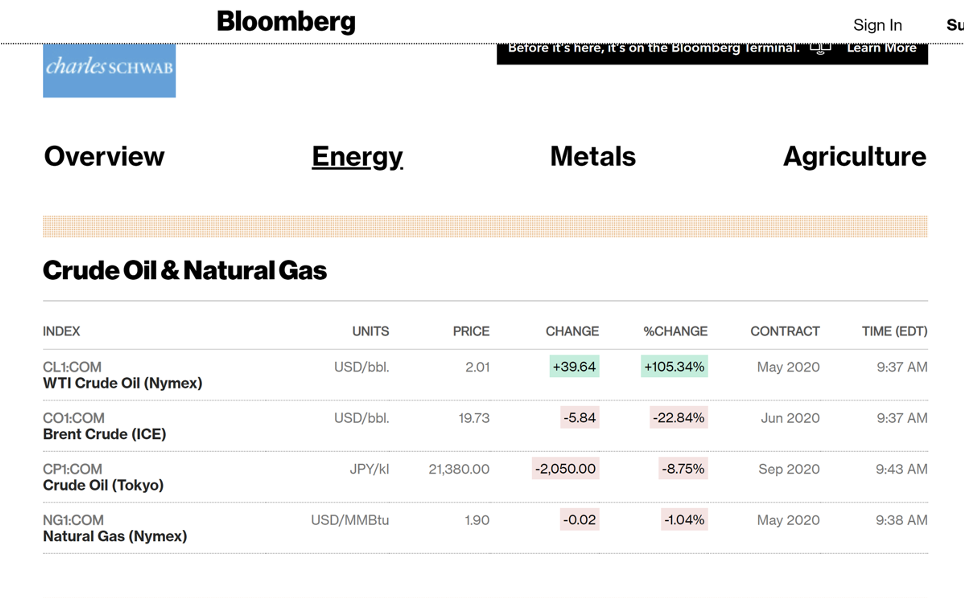
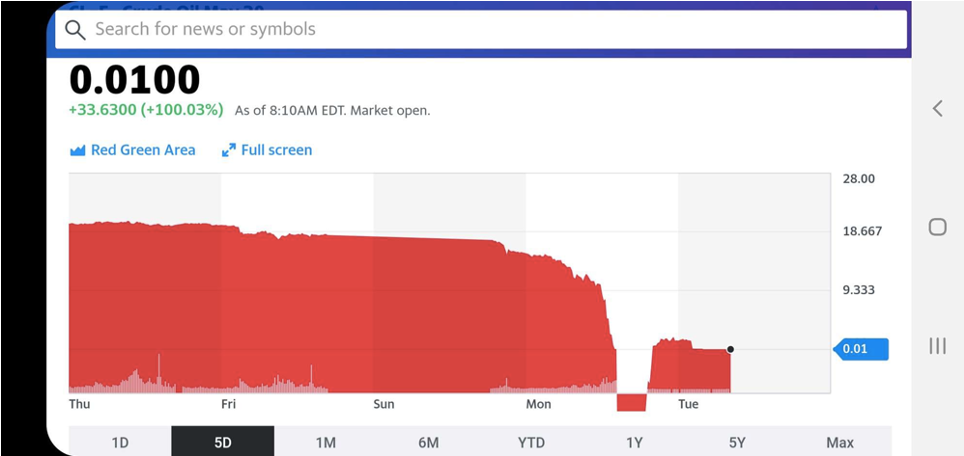
Note that, if these events were unexpected for Bloomberg, then the Chicago Mercantile Exchange, on which there were trades, on April 16 allowed negative prices. In any case, for the oil market this event turned out to be extremely important, since it actually means that the pricing mechanism created after the oil crisis of the early 70s no longer works.
Macroeconomics
The Central Bank of China reduced the rate by 0.2% to a record low of 3.85%, the Central Bank of Mexico – by 0.5% to 6.0% and offered incentives, the Central Bank of Turkey – by 1.00% to 8.75%, the Bank of Russia – by 0.5% to 5.5%.
Foreign direct investment in Indonesia in 1 quarter collapsed by 9.2% per year.
South Korean GDP in January-March fell by 1.4% per quarter (bottom since the end of 2008) and grew by 1.3% per year (minimum since 3 quarter 2009).
Germany’s PPI fell 0.8% per year- a 4-year low.
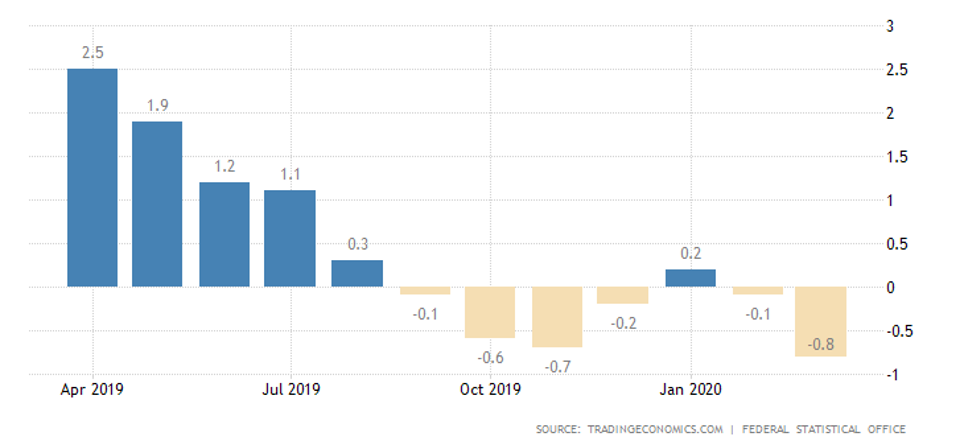
In Spain, -5.0% – record low is near
In Britain, + 0.3% – the bottom since July 2016.
Canada’s CPI is the weakest in 5 years (+ 0.9% per year).
Industrial production in the Russian Federation in March + 0.3% per year (minimum since May 2019).
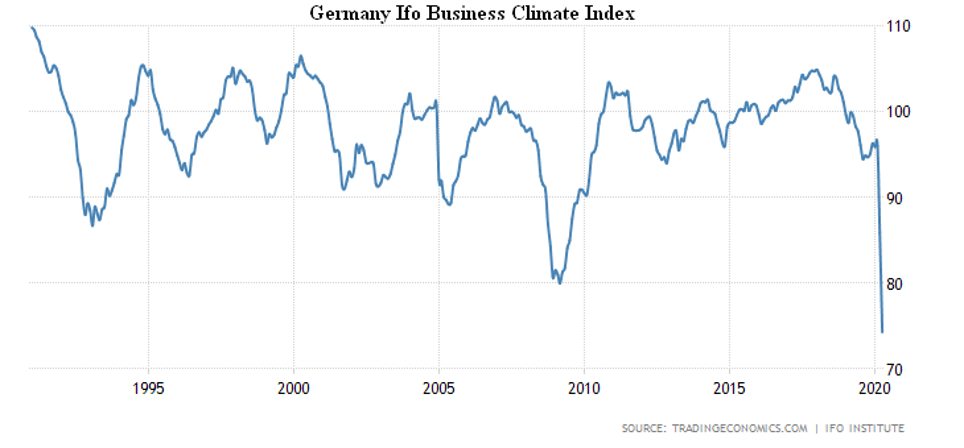
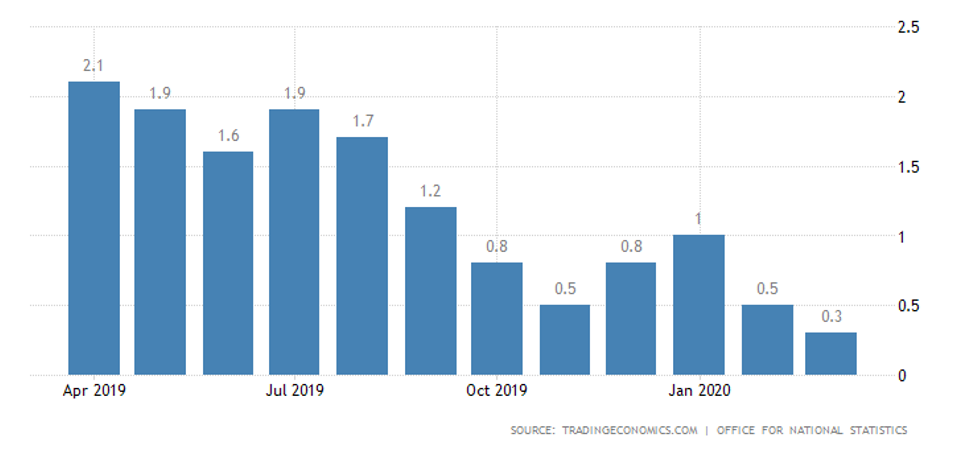
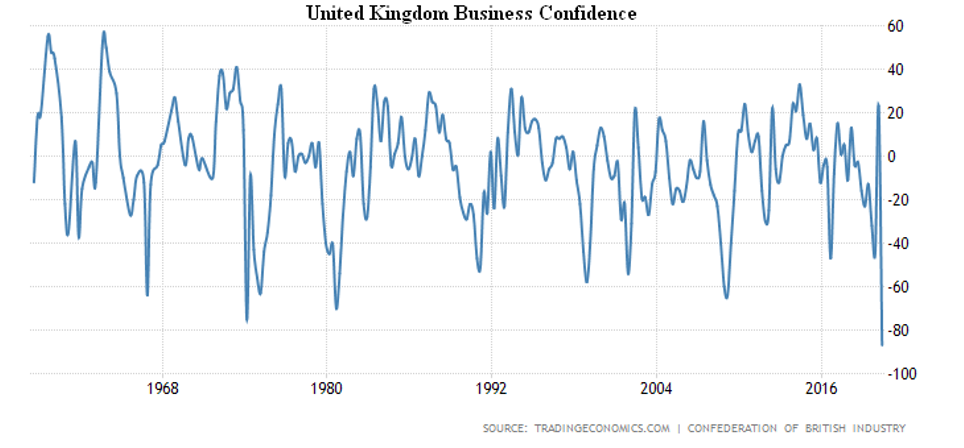
The balance of industrial orders in Britain is the weakest since 2009.
British retail in March dipped 5.1% per month and 5.8% per year – an anti-record for 23 years of observation.
The mood of consumers in the eurozone is the worst since March 2009, in Britain – since July 2008.
Germany has a record bottom, with income expectations worse for 40 years of observation. In the United States the weakest since at least the end of 2011.
The business climate in France is gloomy for 45 years of observation, in Germany (IFO survey) – for 30 years, in Britain – for more than 60 years of observation.
The index of national activity in the US from the Federal Reserve Bank of Chicago in March fell to the bottom since January 2009, the Kansas Federal Reserve Index is the worst in almost 20 years of observation.

Orders for durable goods in the United States fell by 14.4% per month – at least since August 2014. Home sales in the secondary market in the United States fell by 8.5% per month. New home sales dipped 15.4% per month.
Number of unemployed in the United States increased last week by another 4.4 million.
In over 5 weeks 26.5 million people have lost their jobs; 16 million have re-applied for unemployment.
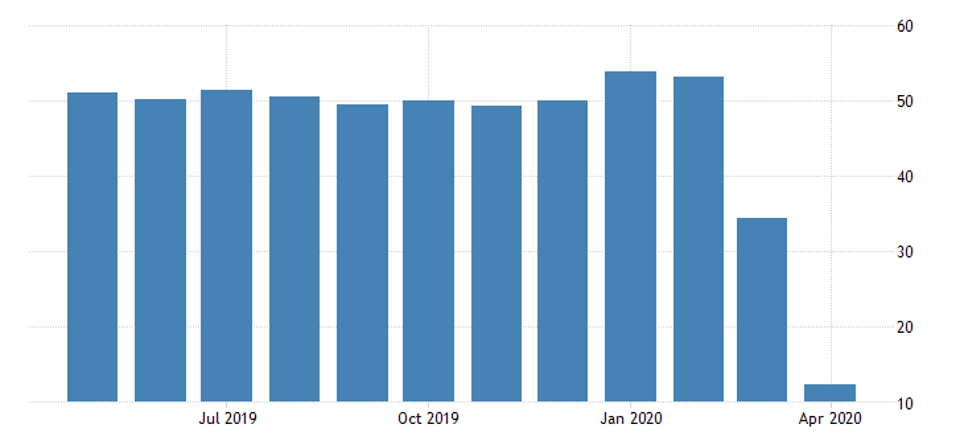
In April, service PMIs collapsed around the world to record lows: in Japan, France, Germany, and the eurozone.
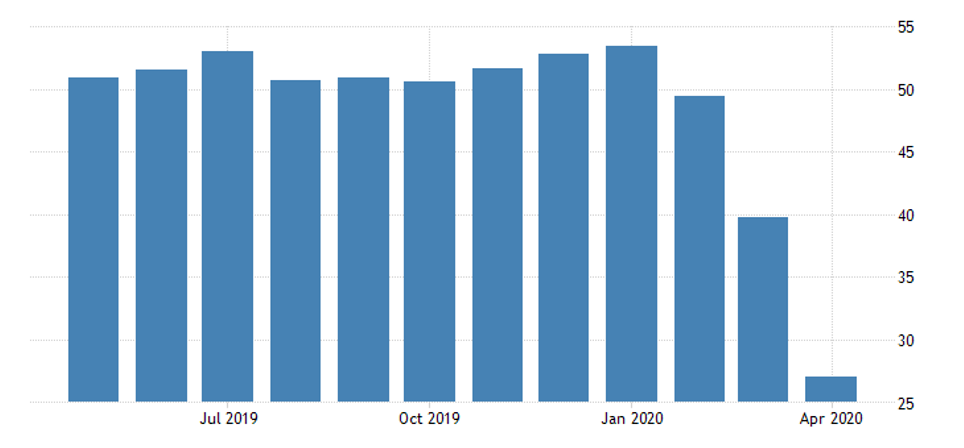
In Britain and the US
In some countries, the situation is similar in manufacturing sectors: for example, in France:
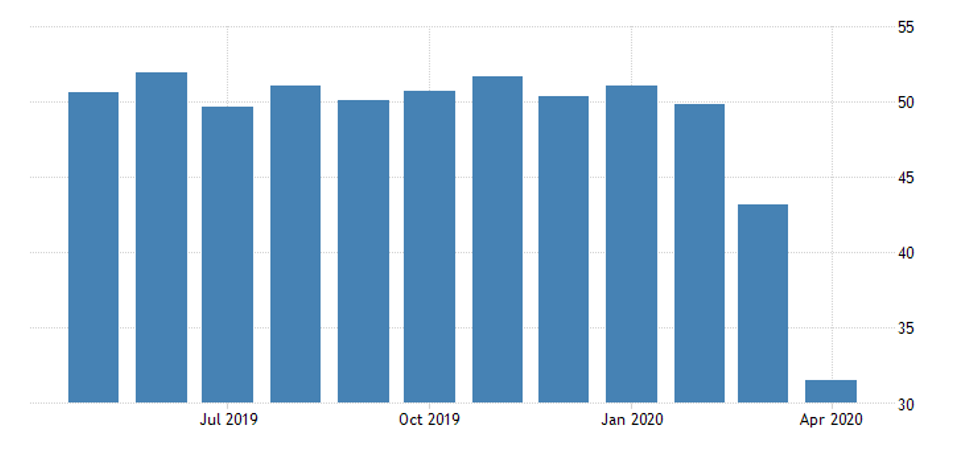
In Germany the 11-year-old bottom, as in the eurozone, where the bottom of 2009 is near.
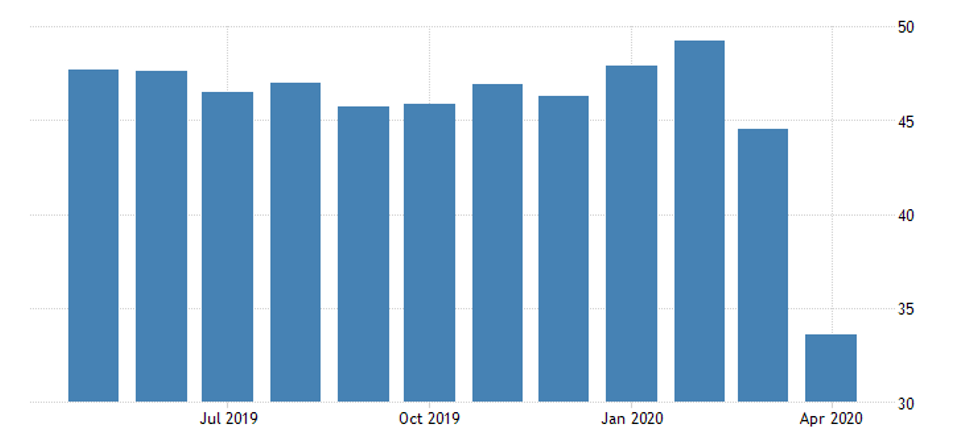
In Britain, the bottom is passed, there is a record low. In the USA, a similar situation:
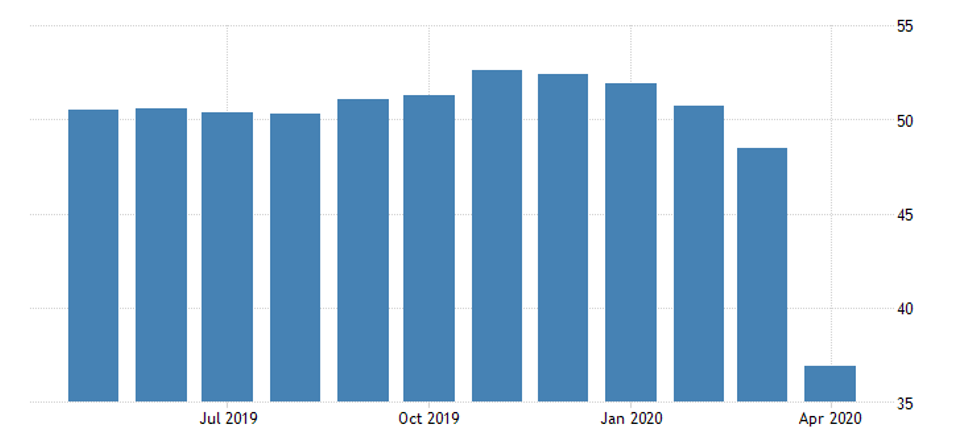
Conclusions: The key conclusion from the current situation is that the basic mechanism of balancing world markets begins to collapse. Events in the futures market have shown that the pricing mechanism in one of the major markets for the global economy has finally broken away from the real state of affairs. In addition, it became clear that prices in the United States, Western Europe and China will no longer be determined by a single mechanism.
The destruction of single markets will inevitably lead to the fact that the restoration of previous macroeconomic indicators will become impossible. In fact, this means that the structural crisis is actively developing and the way out of the crisis in different macro-regions of the world will go with different speed and even, possibly, by different mechanisms. In this regard, for any business that is (today) global, regional or local, the most important issue is understanding the structural changes in the markets. In particular, the share of their industry in the GDP structure and the change of price ratios.

